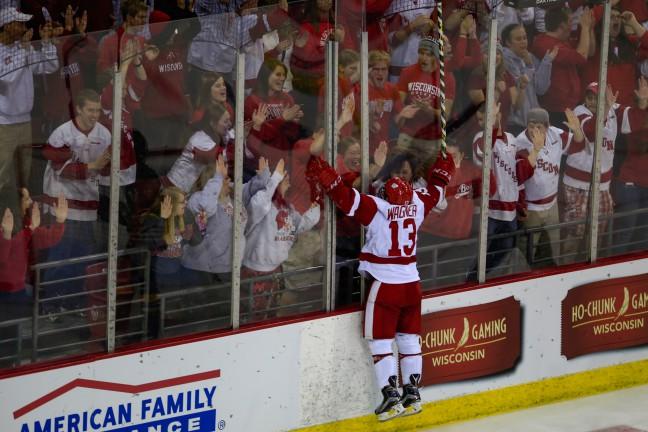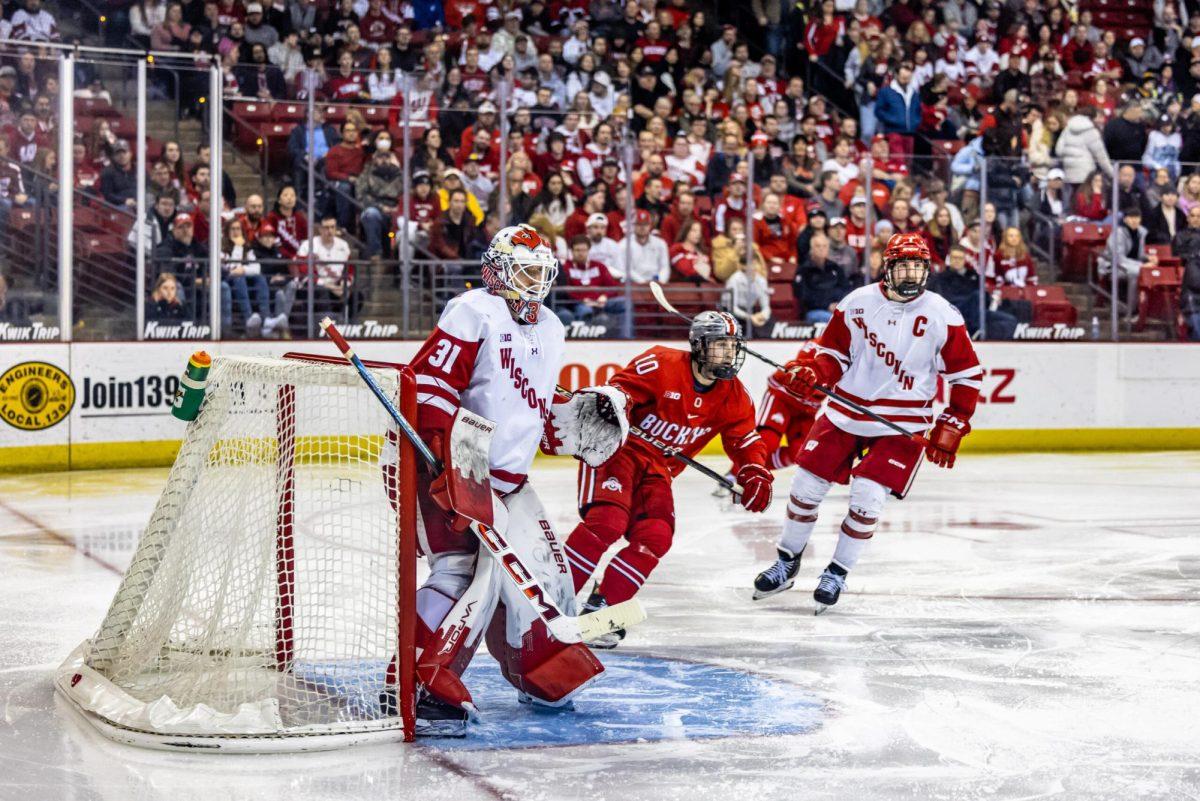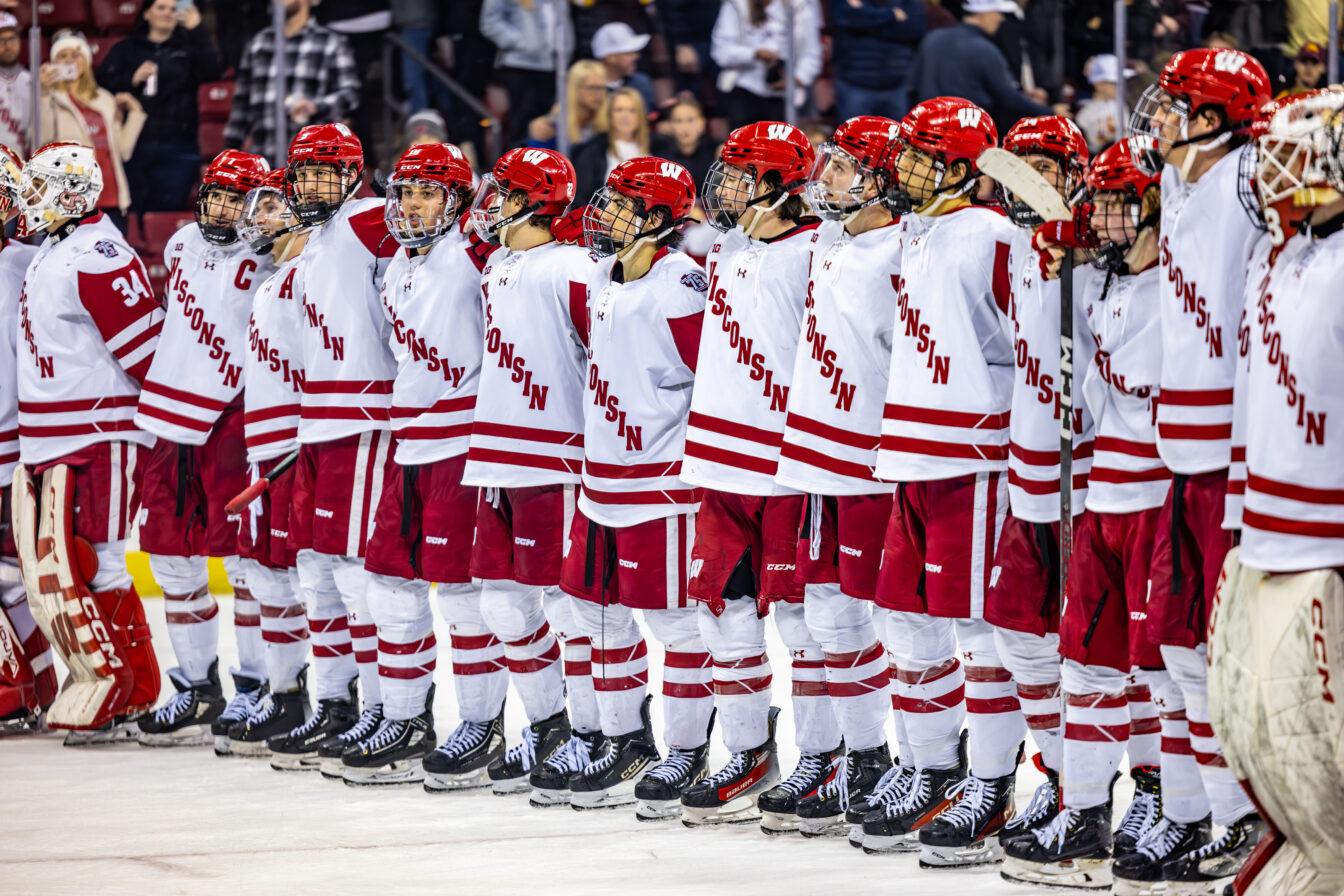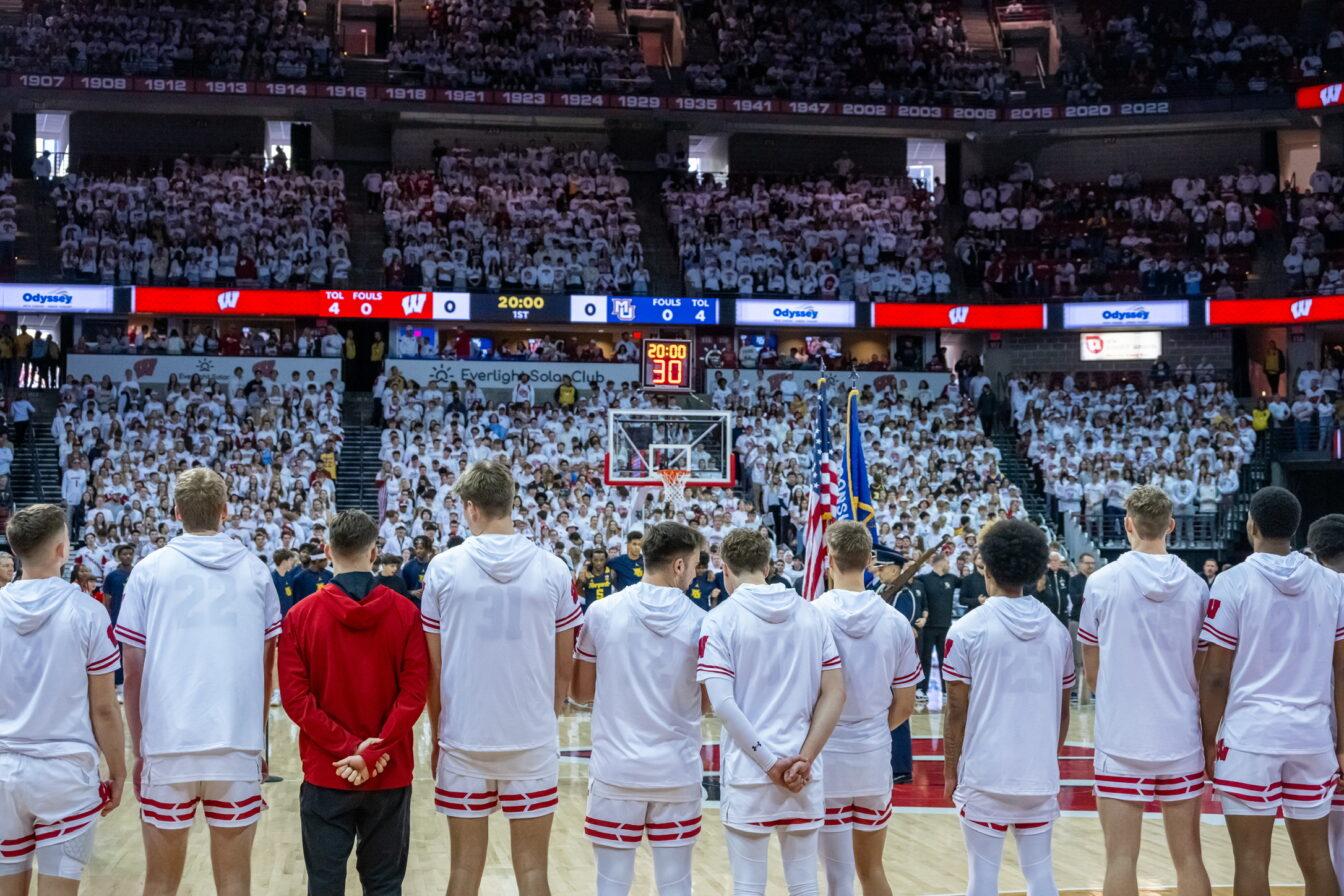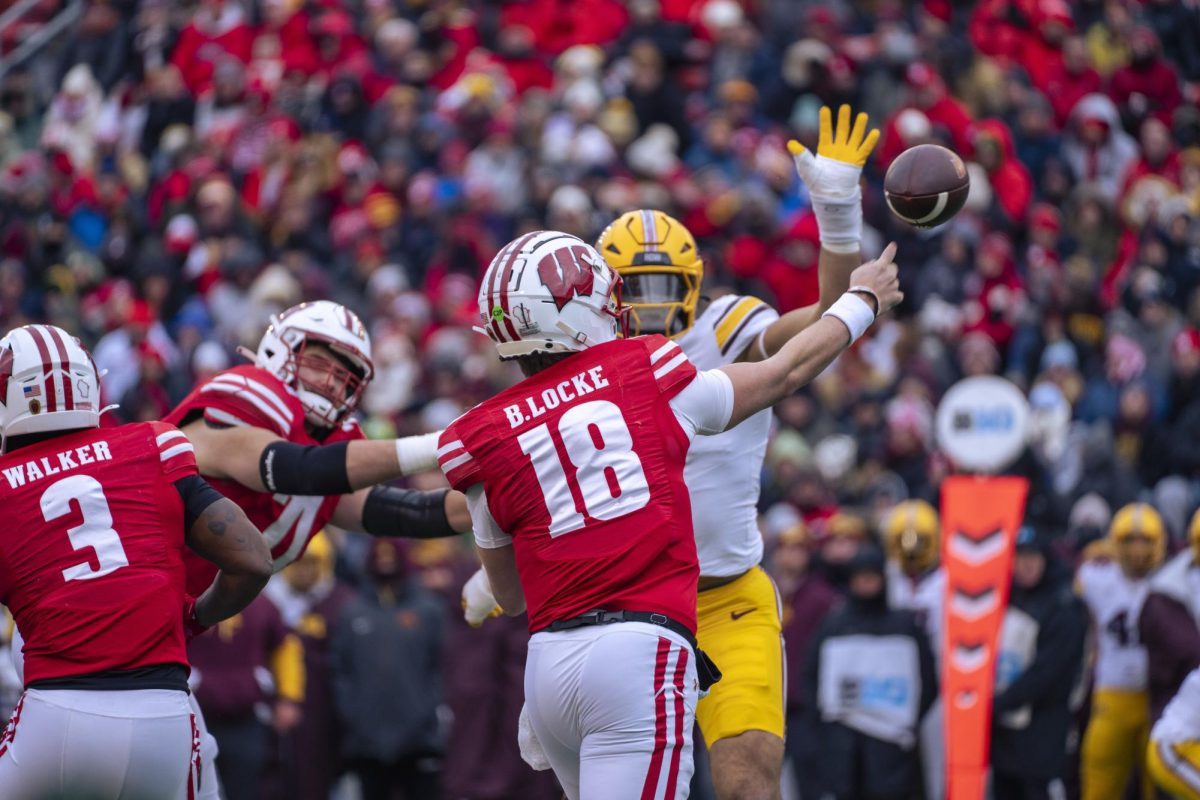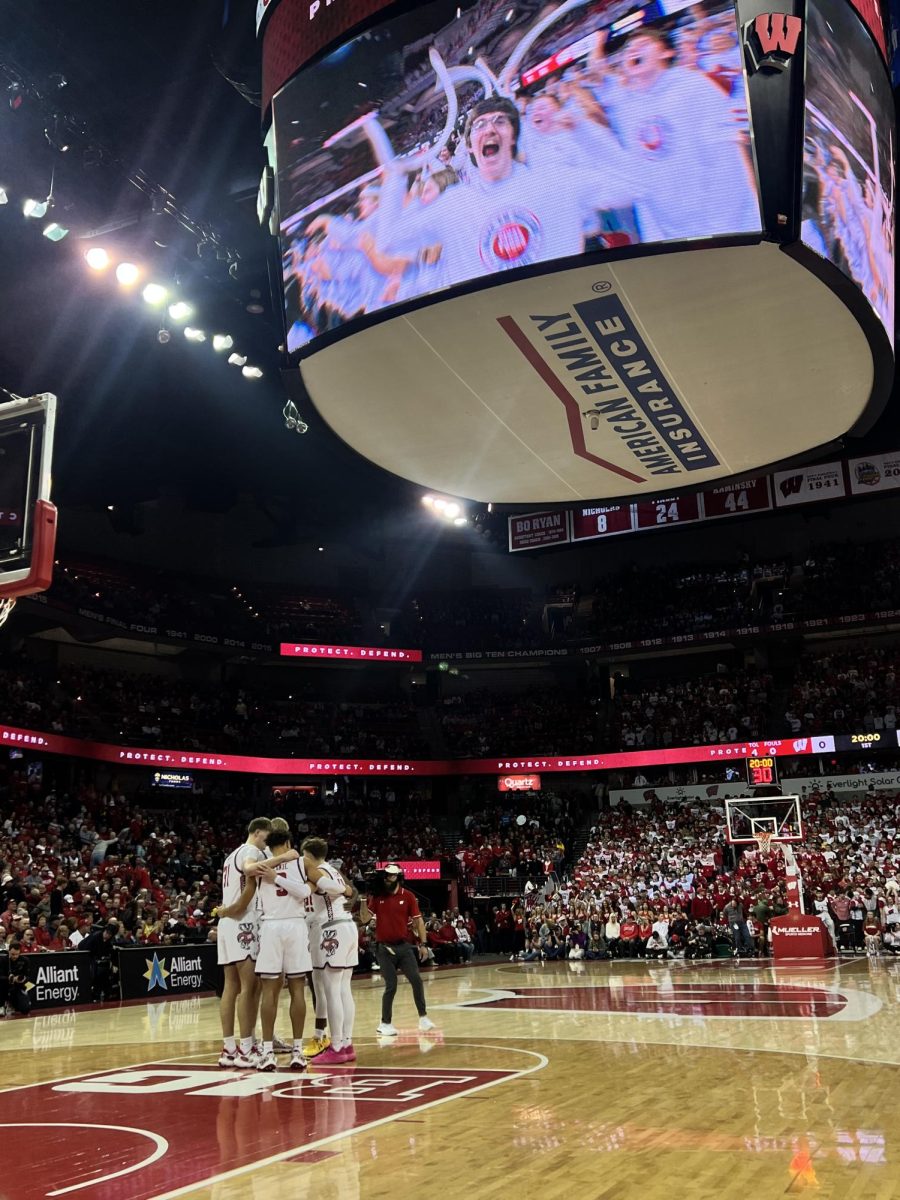Tying their 2014-15 season’s win total of four hasn’t necessarily made this a better season for the University of Wisconsin men’s hockey team.
The Badgers are 4-8-6 right now and sit in fourth place in the Big Ten standings with six points, only three ahead of last place Michigan State.
While there has been a small rebirth for Wisconsin in the 2015-16 season, it isn’t enough to bring the program back to the forefront of college hockey. An exorbitant amount of tied games has held back the team, but coming out of their winter break, the Badgers will face some lackluster opponents. Teams with a combined record of 52-56-22 (.400) comprise Wisconsin’s remaining schedule, giving the Badgers a chance to take the next step in their growth during a potential soft-stretch.
Nearly halfway through the season, these are factors UW head coach Mike Eaves must address in order to be successful during the second half and turn this season around:
Beginnings and endings
Wisconsin has conceded a combined 37 goals in first and third periods, 19 more than they scored in those timeframes. In those same games, they are 1-4-5 when conceding a first period goal, and 0-8-3 when conceding a third period goal.
Composure on defense needs to be a paramount concern for Eaves, the Badgers look inexperienced on many of the goals they’ve given up in these periods, allowing opponents space and time to cross the blue-line and set up their offense.
Despite five of Wisconsin’s seven defensemen being underclassmen, the current crop needs to be more aggressive and ease themselves into the tough “T” forecheck. It’s a complicated 1-1-3 formation that Eaves implemented three seasons ago, and has been successful when executed correctly, notably against Michigan State.
But one of the downsides to this system is allowing space along the boards near the blue line, which opponents have taken advantage of against slow-checking UW forwards. The system has faced criticism in its few years and, while players have historically needed long-adjustment periods, it begs the question of why Eaves hasn’t yet figured how to speed along this learning process.
Regardless of inexperience or a tough formation, the Badgers as a whole need to remain level-headed during crucial points in the game and limit opponents’ scoring when it matters most.
Youth coming alive
Freshman forward Luke Kunin was rumored to be leaving UW for the OHL’s Sarnia Sting, a Canadian major junior team, only two months ago. The rumor has since been debunked — and for the better. The Missouri native has the most goals and is second in points for the Badgers (seven goals, five assists, 14 points) behind only junior Grant Besse. The last time a freshman led Wisconsin in goals was Kyle Turris in the 2007-08 season.
In a 4-4 tie against Ohio State, Kunin tallied a goal and three assists to keep Wisconsin in the game. His hawking presence around the net helped put in two ugly goals, but the aesthetics of each was of no importance to a team scrapping for points.
What is important is the toughness this Wisconsin team showed to come from behind and tie Ohio State, a common storyline this season as the Badgers have done so numerous times against tough opponents (Michigan, Northern Michigan, Ferris State).
Kunin is not leading the charge alone though. Another freshman forward, Seamus Malone, sits at fourth in points (three goals, 10 assists, 13 points) while sophomore Ryan Wagner is third in points (six goals, eight assists, 14 points).
Wisconsin only has six upperclassmen at its disposal, so the continued growth of these young players is paramount if the team is to continue and improve. The Badgers are last in the Big Ten in team scoring (48 goals, 87 assists, 135 points), 106 points behind conference leading Michigan (89 goals, 152 assists, 241 points). To see how that high-powered offense has helped Michigan, just look at their record (13-3-3)— they’ve climbed to a No. 6 ranking in the latest USCHO Poll.
But Wisconsin is not blessed with an evenly distributed set of under and upperclassmen like Michigan, which means these players need to continue their progress at a quick pace in order to follow suit.
Key matchups
Feb. 19 – Feb. 20 vs. Michigan State: Sparty (5-15-2) is last in the Big Ten and one of the teams Wisconsin will need to beat to secure points. This hasn’t proved entirely easy for the Badgers, who are tied 1-1 this season with Michigan State after playing a series earlier in the year in East Lasing.
While it may be a matchup showcasing the race from the bottom, this is an important test for Wisconsin. Simply put, they need to show they can beat a beatable team. Only then can they show they’ve made progress on a two year rebuilding phase.


